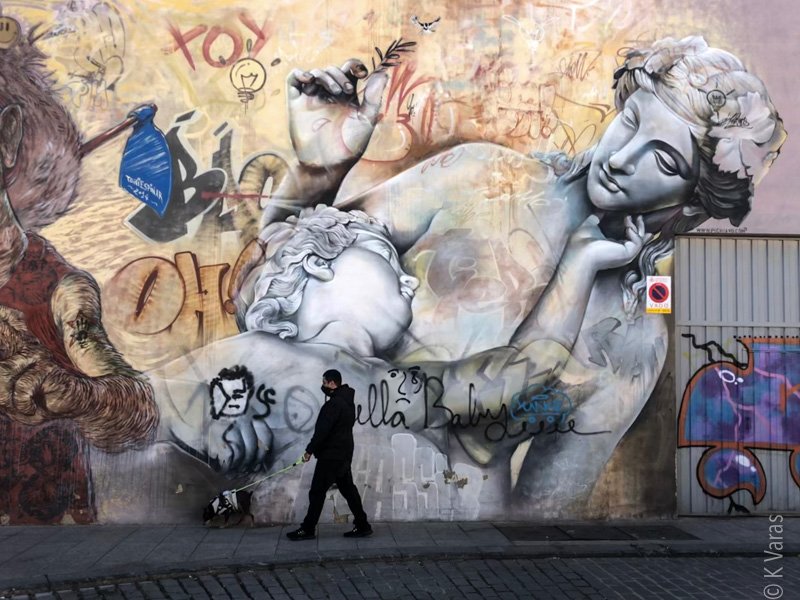
The Murals of Ciutat Vella
One does not need to leave València to see murals … as a matter of fact, if you count the regular graffiti, this city is covered in spray paint. Unfortunately, a lot of it is just regular crappy graffiti but there is much art here as well. As I walk around Ciutat Vella I come across new pieces all the time. They’re not all murals though. Quite often the shutters of the various shops or restaurants hide their art so unless you walk down a specific street at a specific time, it is very easy to miss them. This unpredictability makes for a wonderful surprise. I was lucky on this one day in early January and spotted a bunch I had not noticed before. (Some of the photos are from earlier escapades.)
A few days later all three of us decided to go to El Molinon for lunch to try their specialty, fabada asturiana (bean stew), on Sagrario’s recommendation but since we had to wait for Ewa to get out of her classes, we walked around a part of Ciutat Vella I wasn’t very familiar with. This happened to be close to the Escola d’Art i Superior de Disseny de València (EASD), a 165-year-old art and design school run by the government of València (Comunidad de València, not the city), so perhaps it shouldn’t have been a surprise to see so much street art around the campus. What I didn’t expect to find, however, was a rather large urban garden where people were already working hard making it ready for spring. Of course here spring starts so early I’m sure they will have produce and flowers in no time. I checked Google Maps and it couldn’t have been long ago that both this garden and the mural overlooking it came into existence. Things move fast around here 🌞.

The meal at El Molinon was great, yet again, the fabada being as good as advertised, though we did have a few other plates to round out the menú.

Afterwards, we continued our walk around the area and Sagrario lead us to the Centre Cultural la Beneficència where it was possible we’d be able to see an exposition, as it sometimes is. Unfortunately it wasn’t, but we were able to walk around the courtyards which belong to a building that began its life back in the XVI century as a convent, of course. In the XIX century it was a place where orphans and beggars were housed and helped to become useful members of society. With the arrival of democracy in Spain in 1978, the building became home to two of the most important museums in València: Museu de Prehistòria de València and the Museu Valencià d’Etnologia. And I haven’t see either of them yet. They are on the list!

But, of course, this post was supposed to be about street art, mainly. So please, enjoy the hidden gems of Ciutat Vella and I promise I will add to this if I spot any more.
Murals of Ciutat Vella
Centre Cultural la Beneficència




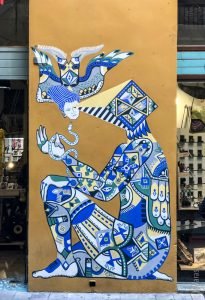
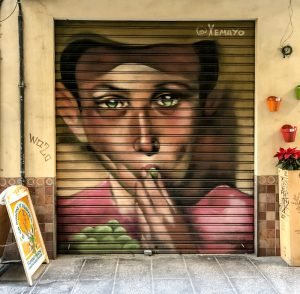
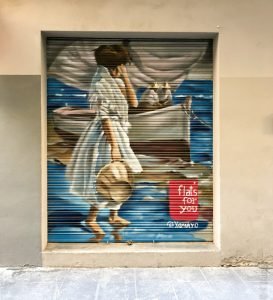
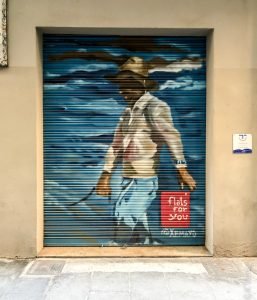
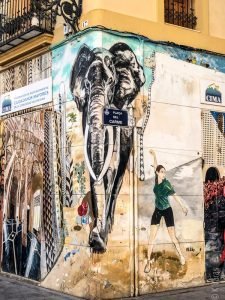
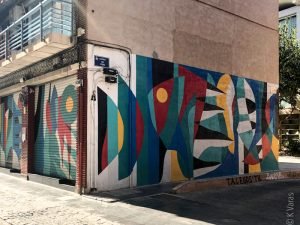
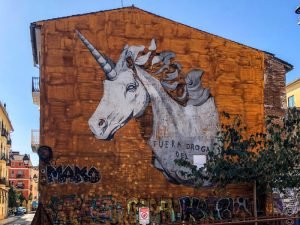
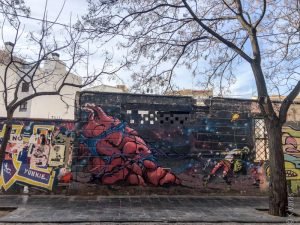
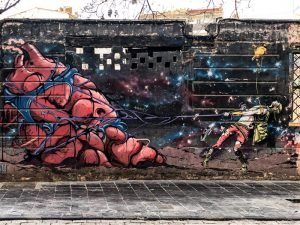
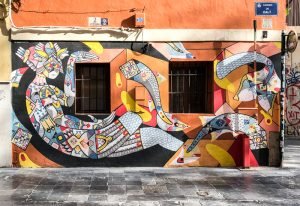
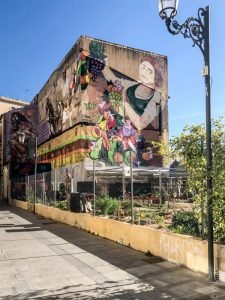
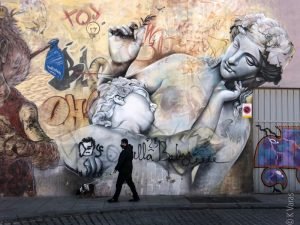
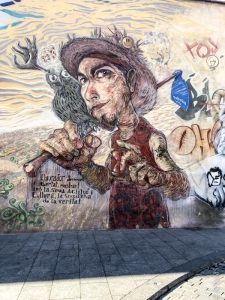
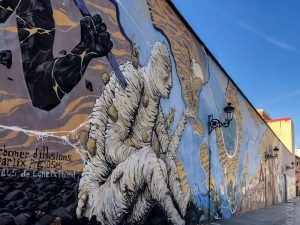
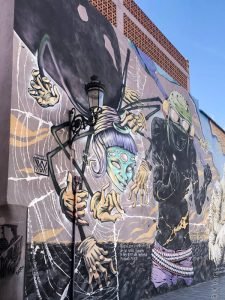
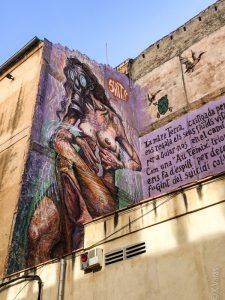

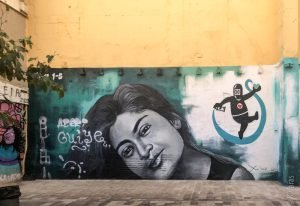
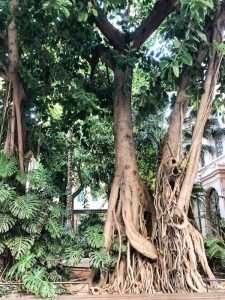
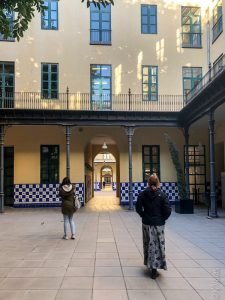
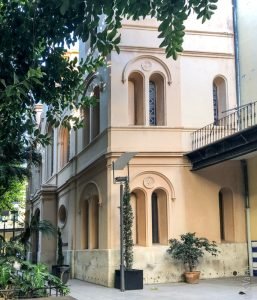
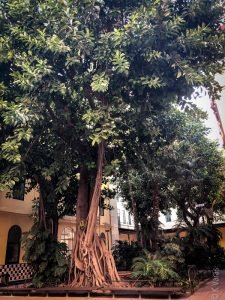
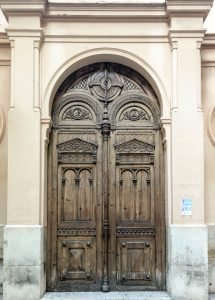
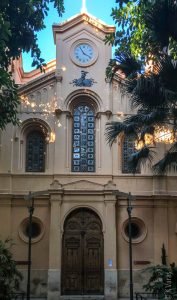
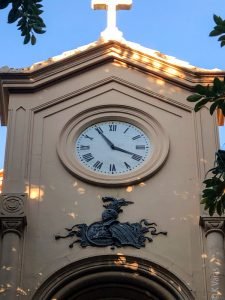

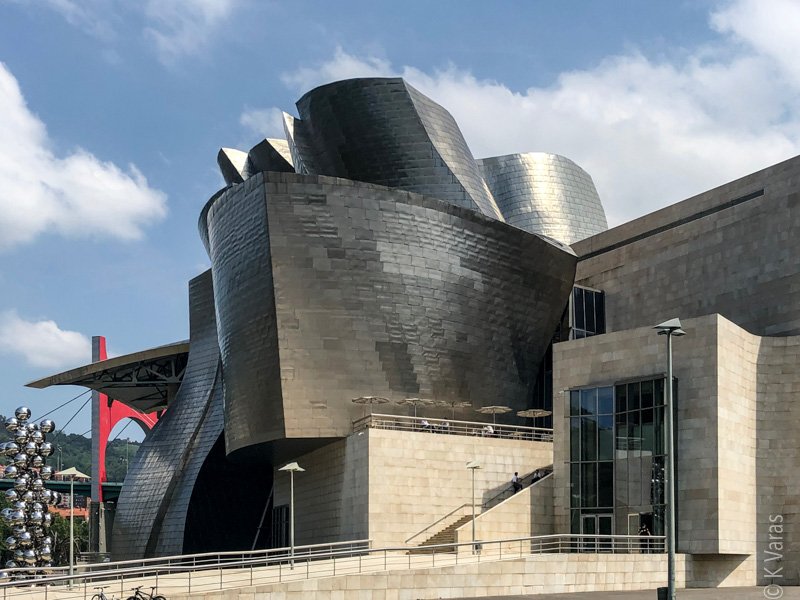

2 Comments
Andrzej
Are there any graffitis on Valencia city walls?
kvaras
Well, there aren’t really any city walls left, if by “city walls” you mean the ancient ones. There is no graffiti on the two remaining city gates (Torres dels Serrans or Torres de Quart), thank goodness. The historical buildings are usually spared the spray paint, though regular walls of many buildings are, sadly, not. The more run down or abandoned-looking a building is, the more graffiti it wears, unfortunately. This may also be a reason why so many walls and shutters are painted with nice designs: graffiti “artists” typically honour the real artists and do not tag their work.